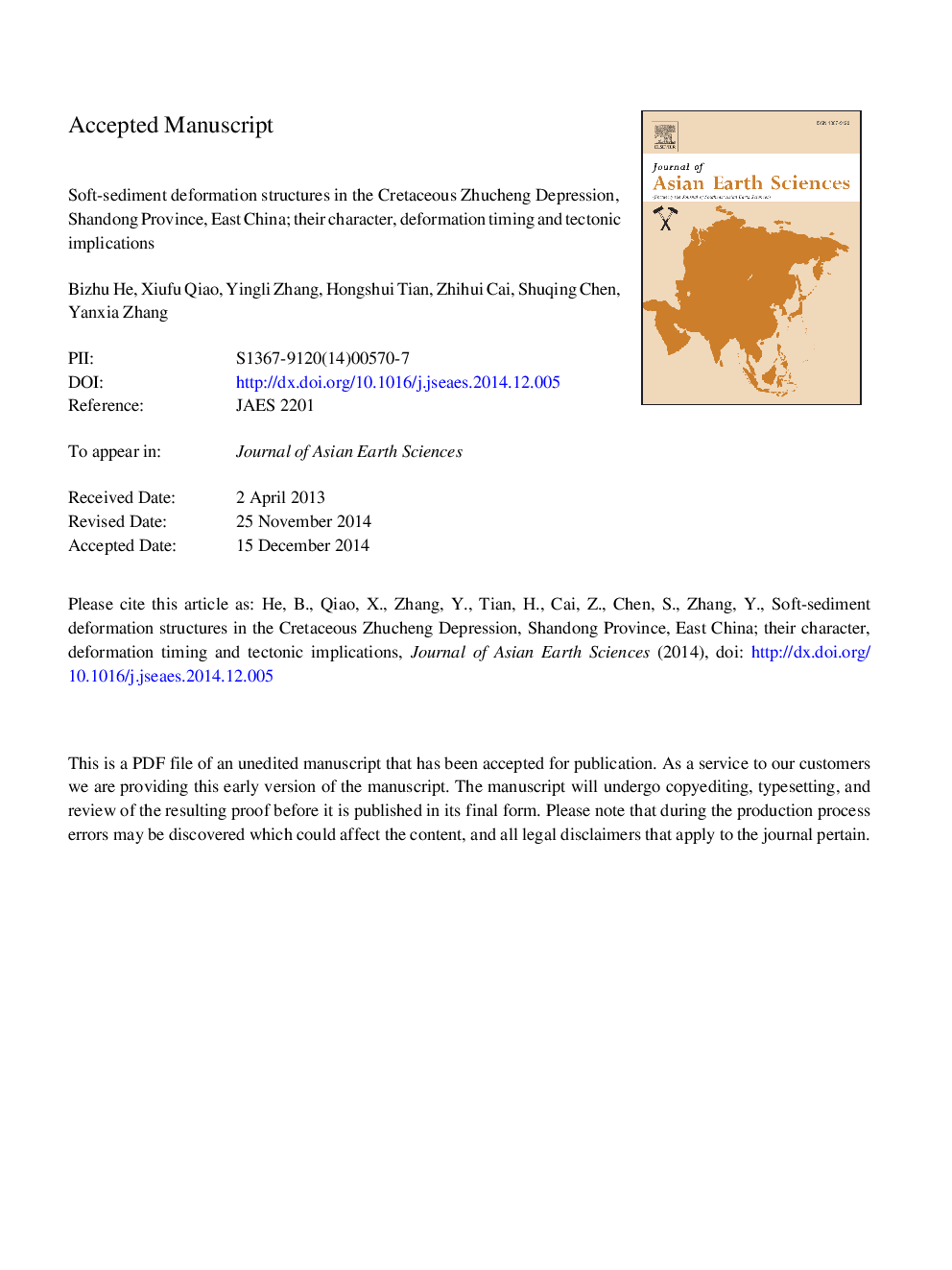| کد مقاله | کد نشریه | سال انتشار | مقاله انگلیسی | نسخه تمام متن |
|---|---|---|---|---|
| 6444103 | 1640359 | 2015 | 82 صفحه PDF | دانلود رایگان |
عنوان انگلیسی مقاله ISI
Soft-sediment deformation structures in the Cretaceous Zhucheng depression, Shandong Province, East China; their character, deformation timing and tectonic implications
ترجمه فارسی عنوان
ساختارهای تغییر شکل نرم در رسوبات کرتاسه ژوچن، استان شاندونگ، شرق چین؛ شخصیت آنها، زمان تغییر شکل و پیامدهای تکتونیکی
دانلود مقاله + سفارش ترجمه
دانلود مقاله ISI انگلیسی
رایگان برای ایرانیان
کلمات کلیدی
موضوعات مرتبط
مهندسی و علوم پایه
علوم زمین و سیارات
زمین شناسی
چکیده انگلیسی
Various plastic and brittle soft-sediment deformation structures (SSDS) are recognized in Cretaceous sedimentary rocks of the Zhucheng depression, East China record important information on the different sediment characteristics, depositional settings and tectonic movements involved in their formation. The recognized SSDS include undulate folds, mound-and-sag structures, diapirs, convolute features and a seismically induced unconformity. The Lower Cretaceous sedimentary rocks are fine grained, lacustrine deposits, whereas those of the Upper Cretaceous are coarse-grained sandstones and conglomerates formed in an alluvial fan or flood-plain setting. These SSDS with coarse-grained rocks are characterized by fault grading, load cast structures, ball and pillow structures and plunged sediment mixture structures. We propose that the SSDS was triggered by paleo-earthquakes. Alternating deformed and undeformed layers suggest frequent and repeated seismic activity. Stratigraphic correlations, the evaluation of magmatic events and the youngest detrital zircon ages indicate that the deformational events occurred mainly in the Early Cretaceous between 118Â Ma to 105Â Ma, and in the Late Cretaceous at approximately 100Â Ma. Numerous giant hadrosaurid fossil skeletons have been found in the Upper Cretaceous Wangshi Group, and unusual and abundant dinosaur tracks are preserved in the Lower Cretaceous Yangzhuang Formation of the Laiyang Group. The zones of widespread SSDS closely underlie and overlie the dinosaur fossil-bearing strata. The depositional setting changed in response to multiple paleoseismic events and regional tectonic movements. After many paleoearthquakes and environmental changes in the Early Cretaceous, many dinosaurs appear to have migrated, based on the presence of many tracks with a similar orientation in lacustrine sedimentary rocks. In the Late Cretaceous strata, large-scale dinosaur fossil layers are associated with paleo-earthquake records, suggesting that the dinosaur fossil burial may be associated with large-scale debris flows triggered by frequent earthquakes. Based on regional tectonic setting, the distribution of SSDS and the predicted paleo-earthquake magnitudes, the seismogenic fault may have been the Wulian Fault.
ناشر
Database: Elsevier - ScienceDirect (ساینس دایرکت)
Journal: Journal of Asian Earth Sciences - Volume 110, 1 October 2015, Pages 101-122
Journal: Journal of Asian Earth Sciences - Volume 110, 1 October 2015, Pages 101-122
نویسندگان
Bizhu He, Xiufu Qiao, Yingli Zhang, Hongshui Tian, Zhihui Cai, Shuqing Chen, Yanxia Zhang,
